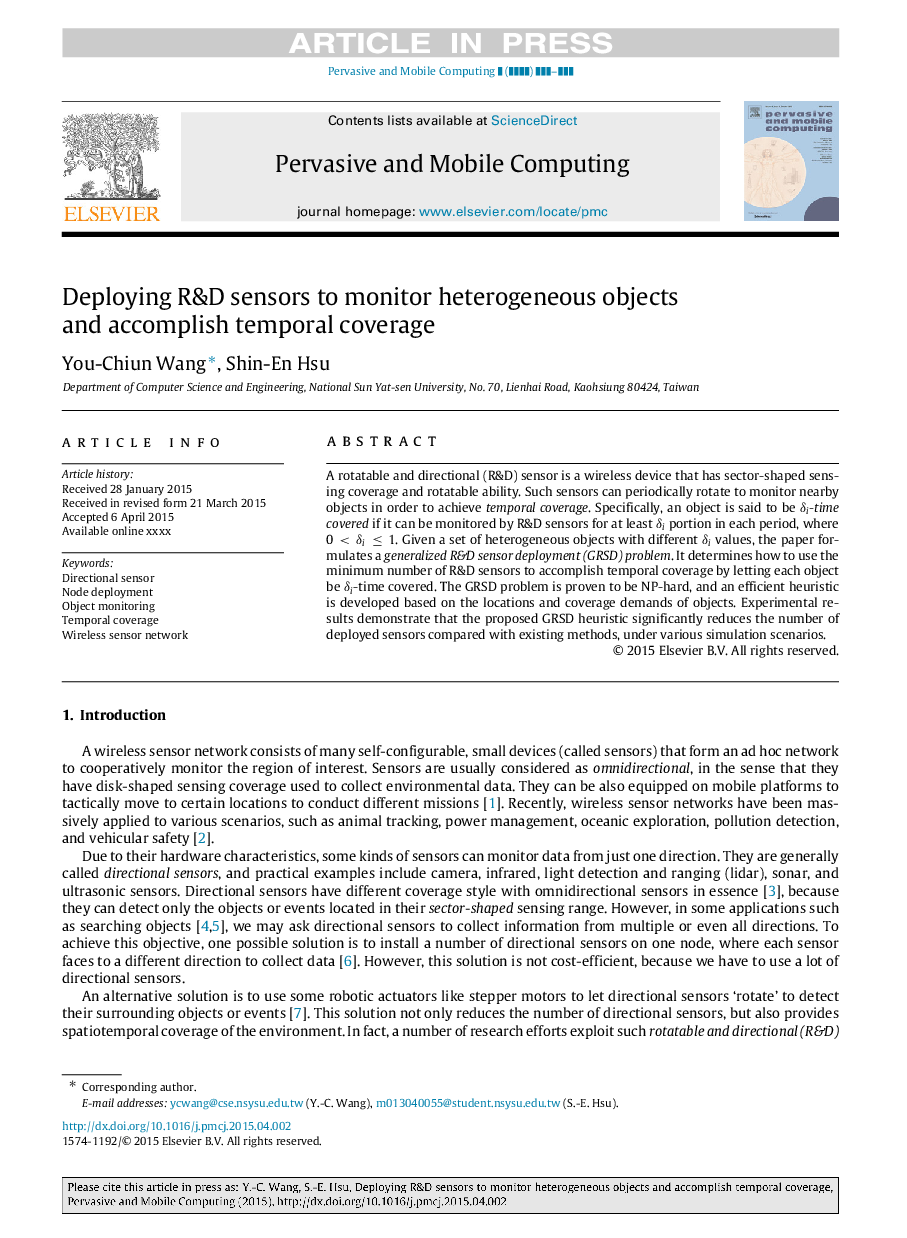| Article ID | Journal | Published Year | Pages | File Type |
|---|---|---|---|---|
| 6888765 | Pervasive and Mobile Computing | 2015 | 17 Pages |
Abstract
A rotatable and directional (R&D) sensor is a wireless device that has sector-shaped sensing coverage and rotatable ability. Such sensors can periodically rotate to monitor nearby objects in order to achieve temporal coverage. Specifically, an object is said to be δi-time covered if it can be monitored by R&D sensors for at least δi portion in each period, where 0<δiâ¤1. Given a set of heterogeneous objects with different δi values, the paper formulates a generalized R&D sensor deployment (GRSD) problem. It determines how to use the minimum number of R&D sensors to accomplish temporal coverage by letting each object be δi-time covered. The GRSD problem is proven to be NP-hard, and an efficient heuristic is developed based on the locations and coverage demands of objects. Experimental results demonstrate that the proposed GRSD heuristic significantly reduces the number of deployed sensors compared with existing methods, under various simulation scenarios.
Related Topics
Physical Sciences and Engineering
Computer Science
Computer Networks and Communications
Authors
You-Chiun Wang, Shin-En Hsu,
